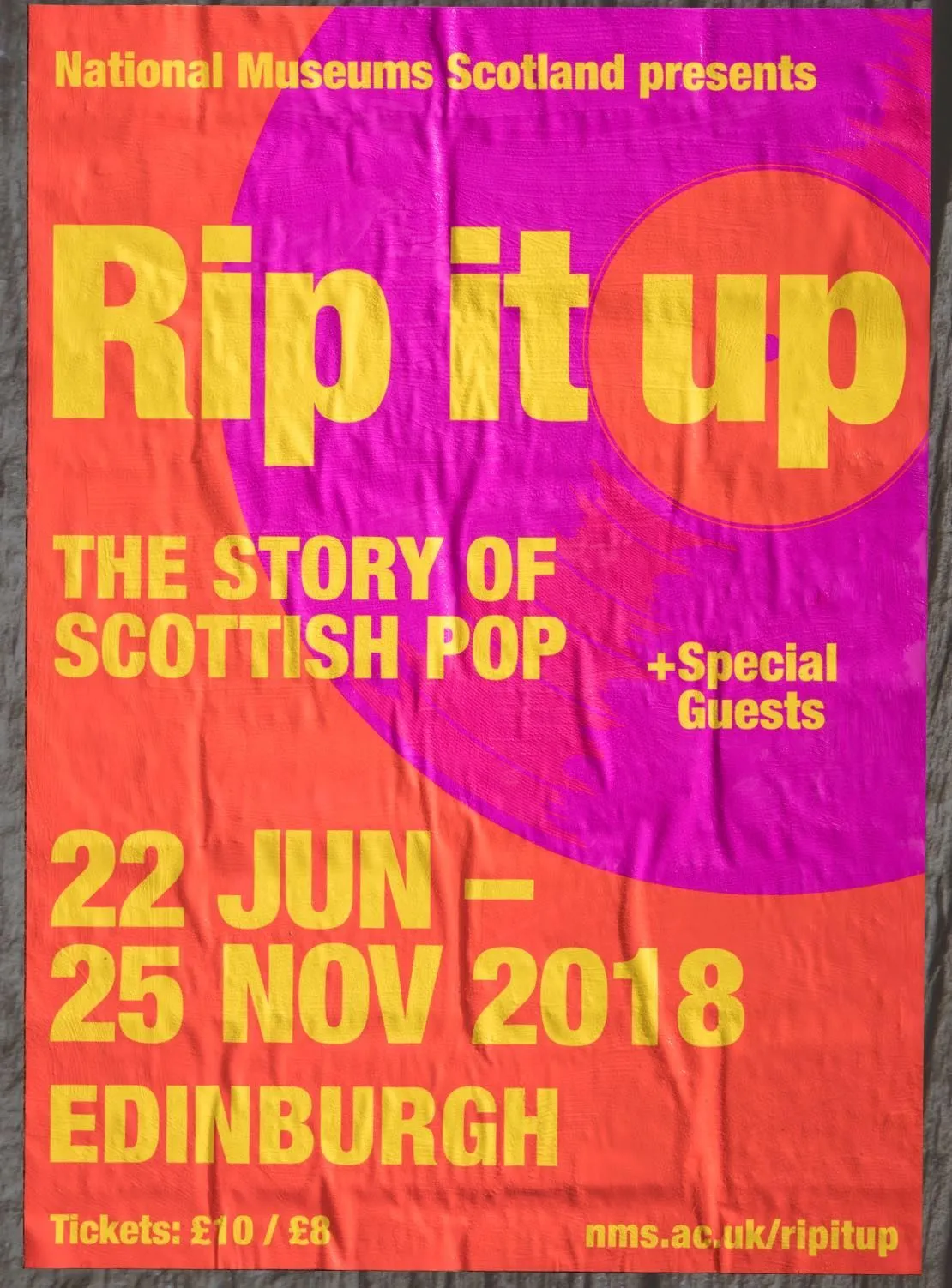2018 music highlights - 'Rip It Up: The Story of Scottish Pop' exhibition
Where were you in 2005?
Hoping that some distance from home would give me chance to grow, I was in my third year of university deep in Glasgow's west end. It was undoubtedly one of the happiest years of my life - I had some time to myself, a good network of friends, and a wonderful girlfriend who'd become my wonderful wife seven years later. As a penniless student I'd got into the thrifty habit of giving out homemade compilation CDs for Christmas, and I named that year's disc Une Année Avec Lumière, a nod to an Arcade Fire track (what an album that was!) but also to the fact that, well, things were great. It was a year of light.
I think of that time very fondly. Sure it was my friends and the city and the space and my youth, but so much of my happiness was bound up in the music all around me. I was there as Belle and Sebastian shrugged off their ramshackle roots with Dear Catastrophe Waitress and The Life Pursuit. I danced with Alex Kapranos just after the first Franz Ferdinand EP was released. I made a fool out of myself in front of Lawrence from Felt. I discovered gin when it was on special offer at Optimo. I saw all sorts of acoustic and electro and dance and folk bands at open mics and all dayers. Scottish pop was great, is great, and I loved it wholeheartedly.
When word came that the National Museum of Scotland would be running a retrospective exhibition about the nation's pop music over the summer, I couldn't not go.

Rip It Up: The Story of Scottish Pop traced a lineage from the fifties onwards, from the dancehalls where sailors played rock and roll singles brought home from the US right up to the sad news about Scott Hutchison this year.
Most exhibitions like this are very dry affairs, a few sparse curios behind glass and not a lot else. There were artifacts here but there was a lot else around them - jukeboxes, interactives, a lot of the written descriptions you'd expect, and half a dozen short videos lasting around five minutes each. As you visited an era - early seventies, say - you saw the guitars and the outfits and the memorabilia, you listened to a few tunes, you watched the video documentary for that era... and you tended to linger. I wondered if it was just me and my interest in music, but as I walked around the exhibit first thing on an October morning I noticed that everyone was doing the same. Very easy to spend twenty minutes or more soaking up a decade before moving on.
Tying the exhibition to a BBC documentary series was a stroke of genius. The films throughout the museum were edited highlights from something that was thoughtfully produced with appearances from so many major and minor figures from the past seventy years. Adding their voices to the exhibits gave more context and a sense that this was a comprehensive look at Scotland's pop history rather than a scrambled together best-of. The final room containing a huge widescreen film showing a fifteen minute megamix of live performances in Scotland from Scottish artists was truly mindblowing.
I could talk about the Bay City Rollers badges or Lulu's dress or Simple Minds' guitar or Chem19's mixing desk or The Beta Band artwork or any number of artifacts they'd managed to corral, but what was truly amazing is how much I felt I didn't know. It was an education in the best possible sense. Bands which meant a lot to me were represented but were one of a hundred or more exhibits there. Why hadn't I listened to the Rezillos more? Or Young Fathers? Or any number of other bands that were just as prominently displayed as any other?
Rip It Up was a very rare thing indeed. It was an exhibition about something I love, and rather than just reflect that love back at me it made me love that thing all the more.
I wasn't there in 1966, or 1975, or 1988. But I was there briefly in 2005, and I was there in 2018 for Rip It Up. And for both those things I am truly thankful.